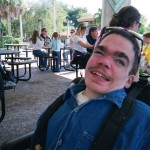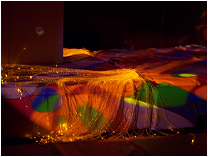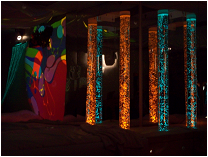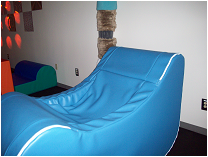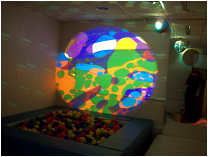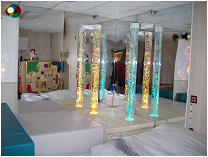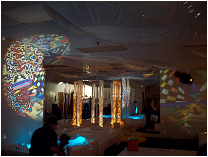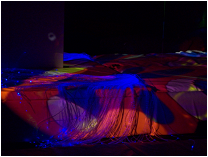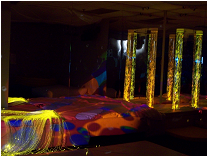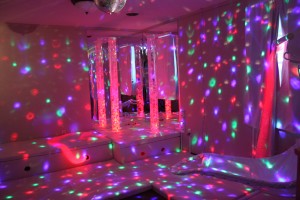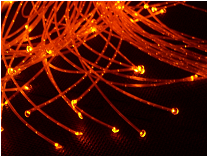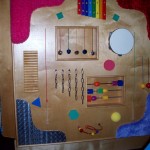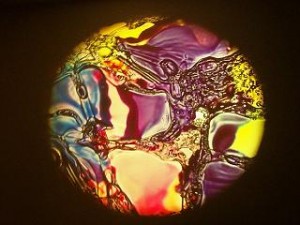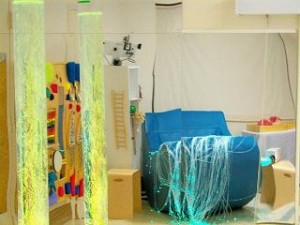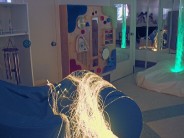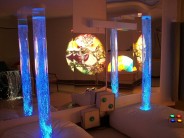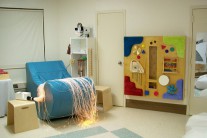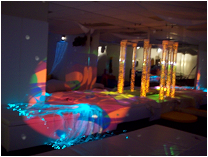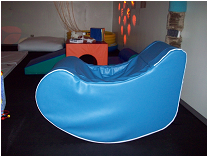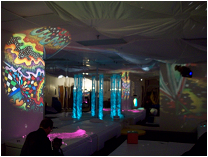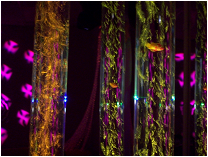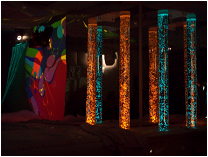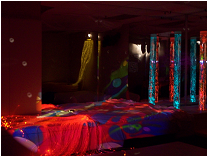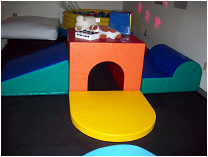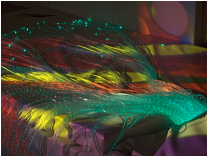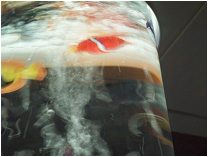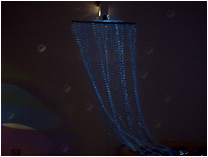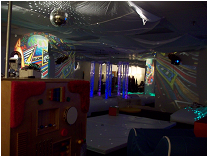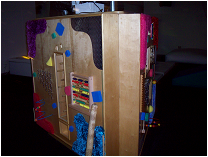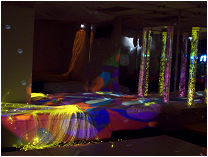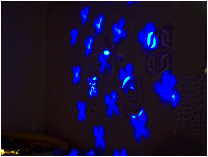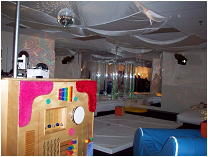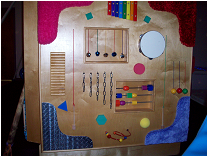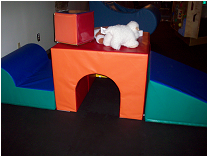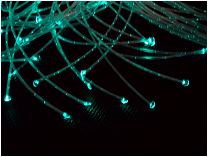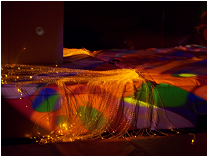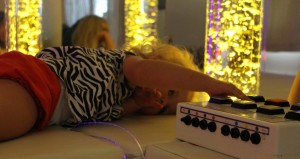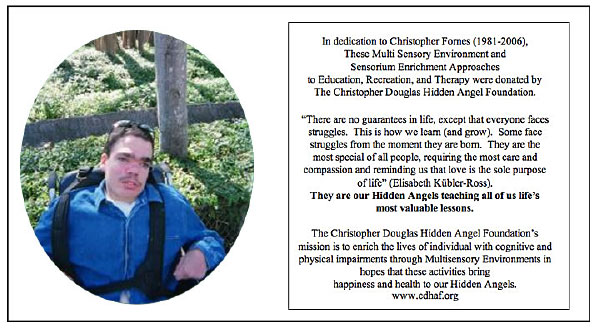“There are no guarantees in life, except that everyone faces struggles. This is how we learn (and grow). Some face struggles from the moment they are born. They are the most special of all people, requiring the most care and compassion and reminding us that love is the sole purpose of life.”– Elisabeth Kübler-Ross
These are our Hidden Angels – teaching all of us life’s most valuable lessons.
Multisensory room helps individuals with developmental disabilties
Treatment and Learning Centers ramps up occupational therapy department
April 25, 2012 Maryland – Serhan Stegman toddled to the bubble tubes, wrapped his arms around the long cylinders of water, changing colored light and rising bubbles.
Like a child on a carousel, he spun, his tiny arms the fulcrum for his spinning delight.
Serhan, 2, of Darnestown uses the new multisensory room at the Treatment and Learning Centers in Rockville twice per week to help him notice and process his environment.
“The equipment they have in there, it seems so simple,” said Ulgen Fideli, Serhan’s mother. “But it’s so important to him.”
Serhan has a pervasive development disorder that is not otherwise specified. The multisensory room — a space with lighting effects, bubble tubes and water and vibrating beds — helps promote neurological activity and encourages relaxation for children such as Serhan.Multisensory environments help encourage learning, cognitive and motor development, language skills and social interaction, said Brigid Baker, director of occupational therapy at the centers. The Treatment and Learning Centers is a nonprofit offering services, including child care and preschool programs, occupational therapy, testing and tutoring and outpatient services.
“It’s also great for our kids who have sensory processing difficulties, similar to those on the autism spectrum, to help them be in more control of their environment,” Baker said.
When a child pushes a green button, the lights in the bubble tubes turn green. It’s cause and effect, showing the children how one action can drive another.
The room cost $24,000 to build, with $10,800 of that funding coming from Christopher Douglas Hidden Angel Foundation, an organization promoting the use of multisensory environments to enrich the lives of people with emotional, cognitive and physical impairments. The other $13,200 came from donations from the Rockville Rotary Club Foundation, Wheaton-Silver Spring Kiwanis Club, CVS Pharmacy and private donors.
“I think people really saw the difference this would make for children in the community,” said Dr. Pat Ritter, the center’s executive director.
Such environments still are relatively unique; the Kennedy Krieger Institute in Baltimore — which has a Rockville campus — and Carroll Manor Elementary School in Adamstown feature similar rooms. Hidden Angels has helped fund 35 other rooms, Baker said.
The concept of multisensory environments began in Europe in the 1960s, and took off in the U.S. about 35 years ago, Baker said.
“Through the research, we know that it works,” Baker said. “But we need to know the empirical information of why it works.”
Mostly, the rooms serve to relax overstimulated children, said Linda Messbauer, an occupational therapist and founding member of the American Association of Multisensory Environments.
When used correctly with a therapist guiding the child’s activity, the room serves to empower and calm.
“The joy and pleasure chemistry cannot coexist with stress chemistry,” Messbauer said. “As one goes up, the other goes down.”
Children with autism, cerebral palsy, chronic pain syndrome and other developmental disabilities can benefit from such spaces.
Treatment and Learning Centers serve about 200 children in occupational therapy. About 75 percent of those children will use the room. Patient ages range from 1 to 13 years old.
Jennifer Natalya Fink and Sarah Sohn’s 5-year-old daughter, who was diagnosed with autism at 2, spends time in the new room as part of interactive group therapy. Her parents say she loves it.
“She took like a fish to water here,” said Sohn of Washington Grove. “I think that really speaks to their willingness to meet the kids where they’re at.”
Their daughter receives intensive speech and occupational therapy.
One in 88 children have been identified with an autism spectrum disorder, according to a 2012 community report by the Centers for Disease Control and Prevention. As of September, 3,410 children were on the waiting list to receive state and federally funded therapeutic services, respite care and other support programs in their community and at home instead of an institution-type setting. Of those, 673 live in Montgomery County and 196 children receive those services. The waitlist is about eight years long.
“There’s a period of coming to terms with it and accepting,” Fink said of her daughter’s diagnosis. “She’s an individual. She’s a great kid and we try to focus on that.”
Fink and Sohn celebrate milestones, such as their daughter drinking from a cup without a straw and lid. And they note the child’s ability to key into the joyful dimensions of life.
“Social difficulty doesn’t mean you don’t have the capacity to be loving and warm,” Fink said. “They all do.”
abryant@gazette.net
